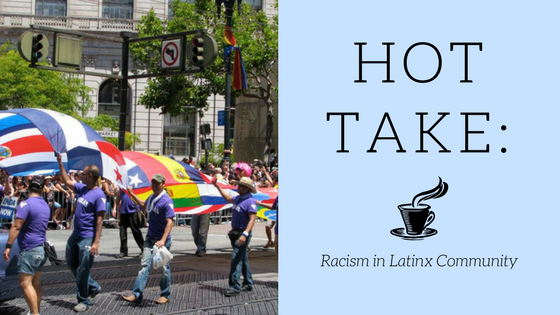Casual racism is still racism
Microaggressions plague Latinx community

Image by Steven Damron via Creative Commons license
Constant microaggressions and casual racism has been and continues to infiltrate the culture and actions of the people of Latin America. Recognizing and bringing attention to these acts of racism is what needs to be done in order to help finish the battle for racial equality in the Latinx community.
Here’s a hot take: the people of Latin America must come together and, once and for all, recognize and work on ending the microaggressions and racism that pervade much of the community.
One of the reasons why racism is still such a grandiose problem in Latin America is because of the amount of people that refuse to acknowledge it. “In Latin America, racism is a very uncomfortable subject,” Cuban cultural investigator and activist Roberto Zurbano said. “We are incapable of recognizing it.”
The Latinx community is a community with a tremendous amount of unresolved racism. In an interview with a local north central Florida radio station, Zurbano talked about the fact that while there have been several social revolutions in Cuba, there have been no much-needed racial revolutions. He discusses the importance of going around and encouraging everyone to use their platform and speak out against the injustices and racism that black Latinx face within their own community.
This racism goes on throughout the Latinx community in a variety of different countries. In the Dominican Republic, an estimated 90% of the inhabitants are of African descent, yet countless Dominicans deny the fact that they are both black and Dominican. Julissa Castillo, a writer for The Establishment magazine, wrote an article about her experience as a black Dominican. She talked about how growing up in Tennessee, she would get many negative and incorrect comments about her ethnicity and nationality — but the worst comment that her family could think of would be “Are you black?” They would immediately respond with “We’re Dominican, not black!” refusing by any means to accept the fact that they, along with the grand majority of Dominicans, are both. “It is important for me to embrace [being black] because denying it — denying this fundamental part of myself — means that on some level, being black is a bad thing, that it’s something to be ashamed of,” Castillo said.
Maribel Nunez, a director of an Afro-Dominican group and journalist, says that “a lot of rejection of blackness in this country… It’s a form of self-hatred.”
Other problems include the “nicknames” that children receive due to their skin tone. Castillo talks about her grandmother calling her younger, darker-skinned brother “Haitiano” because of his appearance and of the correlation that many Dominicans have with relating black people of a darker complexion as Haitian, who are the ones who share the island with Dominicans, instead of Dominican.
Growing up in Argentina and being from an Argentine family has made me be able to recognize many of the slang casually used there. One of the most popular nicknames to call someone is “nergo/a.” This is directly translated as “black.” If an Argentine calls someone negro/a, then one has to look at the context of the sentence it was used. It can either be an endearing nickname for someone black or white, or it can be used as a racist slur when insulting someone. “The malleability and instability of the negro allusion is explained as a sign of the country’s disjointed process of ethnogenesis,” Ezequiel Adamovsky writes.
Another problem in Latin America is beauty standards that glorify European features and lessen the value of black indigenous features. In Venezuela, over half the population identifies as either indigenous, mestizo, or black. However, the beauty queens of this country “invariably conform to white beauty ideals,” Hazel Marsh, a lecturer in Latin American studies, said. She also states that the person in charge of Venezuela’s most famous and important beauty pageant declared black women as “not pretty enough” to partake in his pageants, for their noses are “not small enough” and their lips “not thin enough.” Marsh, along with Castillo, wrote about the stigmatization of Afro hair — people in Latin America literally call it “pelo malo,” which is directly translated as “bad hair.”
Dariana Arias, a writer for The Guardian, explained her experience growing up as a darker-skinned woman with indigenous features in Venezuela. Arias would say that when she was young she would be asked if she were a boy and and called the “ugly duckling” by other children. The standards that are forced upon and influence the girls of Venezuela are that they must have a “small nose, ideal weight, angular jawline, extremely high cheekbones and flawless skin (yes, that includes no stretch marks) and last, but not least, light eyes, hair and skin.”
The microaggressions that are ingrained in the culture of Latin America and continually portrayed through the people of these countries are a major problem that needs immediate attention. Change needs to happen because these microaggressions that have existed for far too long many times build up and transform into violent, even more damaging racism. Every form of racism that exists, no matter the size, must be tackled and recognized in order to truly give justice to the people of color of Latin America.

